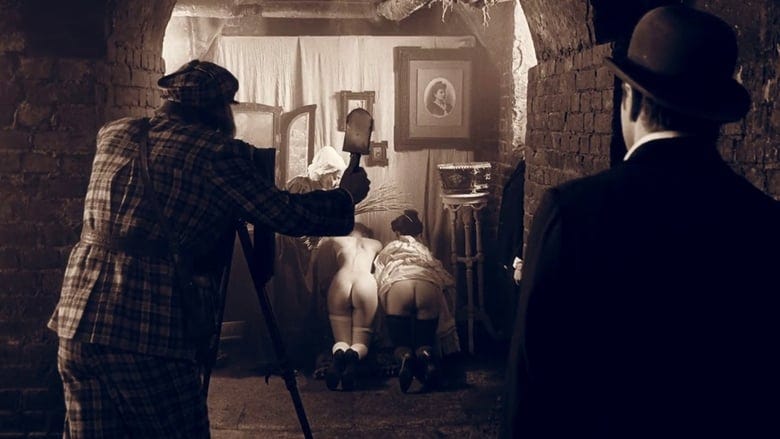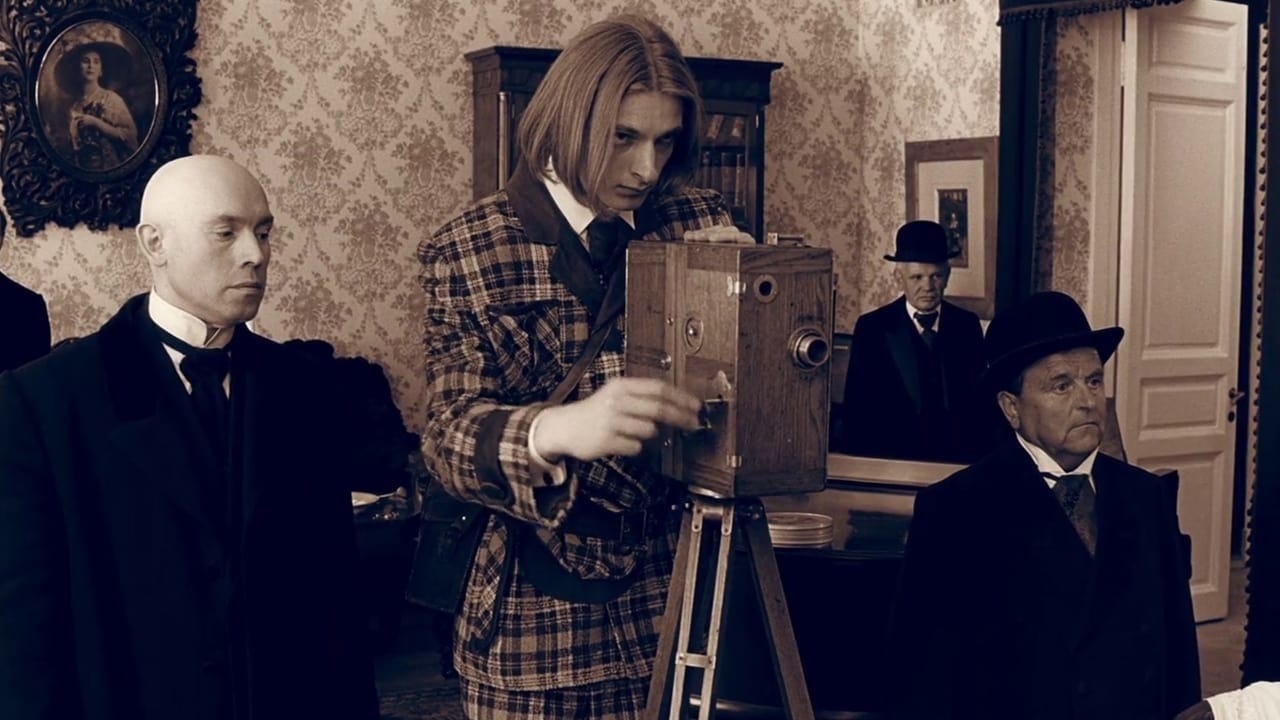A sort of flat grey paste has been spread across the skies of London. Sometimes it departs; like the shell of an egg that has been knocked away with the side of a spoon. Yolk trickles out (sunlight). I’ve spent the last couple of weeks furiously editing some new short films, remixes of things that I’ve shot over the preceding year and a bit. I put most other things on hold.
Now it turns out that the summer was a false one (we’re not there yet, quite), I’m finding myself creating lists of films again. It’s an impossible task, never finalised. This is always really surprising to me. This week’s film came somewhat out of the blue. I can’t remember why I first wanted to watch it. It doesn’t matter.
— Thinking first (quite unrelated really) of Nathaniel Dorsky’s time spent in the Strybing Arboretum in San Francisco; shooting the footage that comprises his seven-film Arboretum cycle. He speaks of his approach as one that flattens those things which rise above the surface of the film, achieving a so-called “continuity of the various” behind which lies “an atmosphere that continues . . . beneath”. The flatness is not really flat; there is an emotional depth, subdued and patient. The films (in this cycle and others) fortify his desire to arrest any kind of rhetorical linearity: “I don’t want to produce mental linkages that can be reduced to language”. Read again (another’s words): this creates a “suppression of a future tense within the film[s]”. We witness, instead, a continuity of moments; not a linear narrative. Here’s a cinema without depravity. Radiant and uncynical. It is close to holiness.
— Balabanov stands at the extreme edge of this shore. You can barely see him waving. Of Freaks and Men has been talked about in terms of what it ‘is’ (rhetorically) - a hammer that smashes the fragile glass of the post-Soviet malaise, that wobbling, disfigured carnival mirror of Russian life through which its citizens stumbled in the years after the Soviet Union’s collapse. Balabanov’s film (a narrative film) expressively operates at the level of political critique. From its shards of shattered glass, it says: post-Soviet Russia is not a hardened condition, but a garden of forking paths. But in order to deepen his critique, he relocates it from the 1990s to the early 1900s. It is an origin story—the long duree of depravity—shackled to the first tireless thrusts of modernity and industrialization.
— Balabanov’s 1998 film oils about in a foreboding monochrome, all tinted with sepia. Its blacks are coal; underexposed to the point of silhouette. Its lights (they are rare) occur outside (as Liza runs through the ruins of an abandoned palace, a rare wide shot) and inside, with the cracking, crumpled smash of a photographer’s bulb. Balabanov’s film operates at the level of rearticulated moments—of blur-edged photographs cut from the photo album of a now elapsed/eradicated world. It begins with a formally jaunty parody of a silent film—sped up steps, jittery movements, intertitles. We glimpse (as it were) the frames between the motion that propels them forward. Photographs that destroy, coming alive; zombified. It wears the cloak of photography, not sensationalising it exactly, but making the entire formal rhythm of the film pulse with what an old photograph is (alien, a bit eerie, a departed moment, inaccessible). As it comes into focus (the film), the debasement clarifies.
— Again, if the past is coming to life in the present, then it is doing so as a living cadaver. This is not the resurrection of Christ. Technology - unclean, actually; and indifferently violent - lurks in the compacted prehistory of the 20th century. Technology - industrialization’s ‘bleeding edge’ - is the progenitor of the ‘freak’. You’d think of Virilio’s modern man - “an inhuman type reduced to [an] animal body that disappears in the superpower of a metallic body [that is] able to annihilate time and space through dynamic performances”.
— He (Balabanov) is also very concerned with the function of repetition: a steam train (a single carriage) which hoots, presses forward, rolls backwards; an object of desirous ambivalence glimpsed repeatedly through Liza’s window. It heralds many things, with its comedically incomplete body: the arrival of the ‘future’ (1917, the Union, its collapse); the Tolstoyan wheels and pistons beneath which Anna Karenina is crushed. It promises what? Escape, a trajectory. But it also intimates the “animal body that disappears” of Virilio (something unholy and massive), just as the camera (or cinemagraph) becomes (in miniature) a kind of condensed machine to transform real, flowing life into freakish and dehumanising spectacle. Pudovkin obviously is the man trapped inside of this machine, even as he holds it/carries it about. Necessarily, it debases. Gigantic funnels and chimneys belch out their monstrous smoke. A train (guttering and spluttering) arrives and arrives. Technology (the future) is not an instrument of clinical futurity, but of malevolence. It renders us into dumb, animalistic subjects.
— Other metaphors are spewn out. The Siamese twins (Kolya and Tolya), by the film’s end, set off for Russia’s east in search of their (already murdered; a doomed venture) father. Liza heads west (i.e., here is Russia, torn between east and west, Etc). The twins discover the truth about their father and return home, only to be exploited anew. Liza (disinherited, draped in mourner’s black) volunteers her passive body to be whipped in a red light district window; money for pleasure. She becomes the spectacle, each falling of the whip registering only passivity on her face (unflinching).
— Bodies, too, are pulled apart by the contradictions of this mired era: where Kolya shrinks away from the depravities authored by Johann (pork-pie hat, a brutish mobster), Tolya reaches out - drowning himself on the wine that is constantly pressed into his hands. Their conjoined body (a subject of abjection and abuse) becomes a murky reflection of the post-Soviet state: an object of spectacle, a ‘freak’, a victim that is pulled in multiple and mortifying directions. When Tolya meets his end (drunk, he collapses; smashing his skull on the edge of a sink), Kolya finds himself not only heartbroken, but tethered to a cadaver. Balabanov is not subtle: this is the body of the revenant state, both living and dead - an object of pity as well as disgust.
— Others? Balabanov (largely) eschews crowd scenes. The streets of St Petersburg are like the avenues of a vast mausoleum. The future (its cusp) is also a graveyard. When we encounter other figures, they are either mute or enraged: the silent spectators who watch (top-hatted, severe) the footage of Liza’s humiliation. Later, these same crowds mob the stage where Kolya and Tolya perform their musical act. The subject is obvious, again: the spectacle. The camera (tightly close) looks first at the screen, and then - reverse shot - lingers on these grim, expressionless faces. The light of the projector arches over them, stuffy and bright; flecks of hair and skin buffeted by the heavy air. Their mother (blind) is easily duped. She falls in love with her child’s kidnapper, the only one who can’t perceive his crack-toothed grin. She too is corrupted (who isn’t?).
— Balabanov avoids a dynamic camera. Never handheld, it may pan and track a little. That’s it. Frequently, it is cantered close to the bodies of the film’s protagonists; their faces flattened by sepia, cauterised by dull light that renders everything visible, a sickly surface area of unreflective totality. Junk piles up. Liquid is spilled. The father, realising that his adoptive sons (Kolya and Tolya) have been kidnapped by black-eyed Johann, rushes pitifully to their defence. He is gut-shot, sour cream dripping (spatters of semen) onto his motionless body. Johann reaches down, taking a glob of the substance in his fingers.
— Why was I speaking about Dorsky - he whose films are so radiant and gentle? I’m not sure. I think there was a sense that Dorsky’s privileging of the moment (of a frame that is resistant to language and futurity) is a kind of extreme doppelgänger to Balabanov’s sickly set-pieces, these moving photographs which haunt the eyeball - feeling like trajectories ripped from past and future (inescapable, claustrophobic). His ‘moments’ are not flat, not radiant, but thorny and discomforting. The frequent shattering of bulbs (and the white light that subsequently fills the frame) reminds us that we, too, are spectators; witnesses to this cynical mauling of the past and the future. Future’s hope is denied, broken apart. Where Dorsky frees us inside of the potential of the moment, Balabanov traps us there, straps us into its horrifying death-drive. Liza, Kolya, Tolya, Pudovkin - all of those who begin the film in a place of grace, are rendered base by the machinations of the mostly mute Johann. Just as we can intuit the tracery of their future (revolution, 1917, Etc), we cannot glimpse a way toward (or an escape from) it. Time is out of joint. We are trapped within a regurgitated cycle of debasement (Liza’s return to the arms of a sadist, the living-death of the twins, and so on).
— Johann, he who renders all goodness into depravity. At the film’s final juncture, he steps out onto the half-melted flowing of the Neva. We expect him to drown (toe pushing through the surface). I audibly gasped when his foot found firmness, and he stepped out. In the very last scene, we witness him cast adrift on a jagged floe of ice - carried (unflinching) beyond the city. Toward death? There is a kind of cursed inversion to this moment, of Jesus crossing the water. Johann has done-in with Jesus. The future is without its saviour. Bowler hat, unsmiling mouth, black eyed. This is the survivor who will be propelled into the future, the inheritor - the one who ‘survived’. The innocents are dead. And innocence with it.
— Yeah it’s not a clever film. Not really. But it’s clever enough to isolate moments of sympathy and joy; even if these things are ground beneath Johann’s boot. It is also funny, in the way that comedy and tragedy are bed-fellows.
— Actually, I think that Balabanov is speaking—principally—about art, and about the malignant origins of bourgeois artistic institutions. The exploitation of the twins is abetted by the (well-heeled) customers who buy Johann’s photographs. And when he puts the twins to use as musical performers, they are welcomed into the institution of bourgeois culture (the theatre). Here, their exploitation continues; the audience is either ignorant or indifferent. So much for the sensibilities of liberal artistic institutions! Pudovkin, Liza’s young suitor, finds himself incapable of ‘saving’ her from this life of humiliation (actually, he films the acts of debasement to which Johann subjects her). Later, he steals the reels of her erotic punishment - not to destroy them (no), but to project them under his own name (reaping the profits). Liza witnesses him, out west, later, pursued in his car (another careening vehicle) by a screaming crowd of celebrants and well-wishers. So much for the sensibilities of liberal filmmakers! Balabanov’s film, again, is cynical. His world is festering and complicated. Art is irreconcilable with innocence. Innocence cannot survive or persist. Russia itself, like the living-dead body of Kolya-Tolya, is poisoned and debased.
— What art can flourish under such conditions? Sokurov, his compatriot and contemporary, has depicted similar moments of abjection, but his cinema (seems, at least) to assert that film itself is an impartial or even redemptive apparatus uncorrupted by what it captures. Balabanov spits on this suggestion. Johann is the destroyer of hope, a corrupter. Really, he is film itself.
If you liked this newsletter then please consider liking, sharing or subscribing. It’s lonely here.








